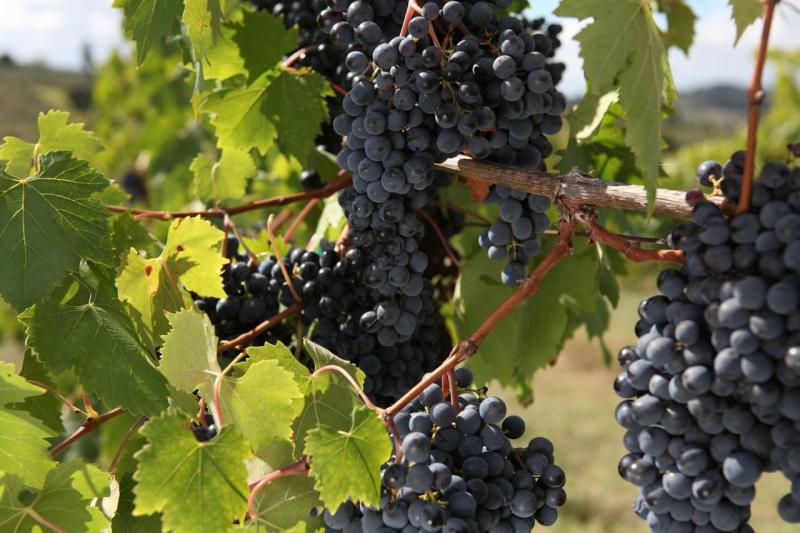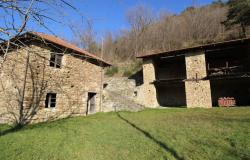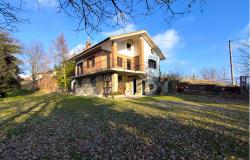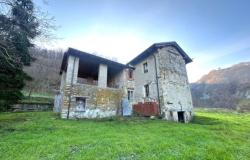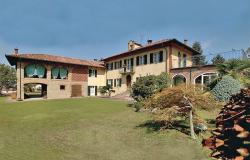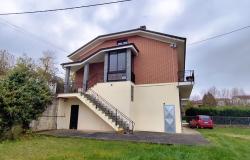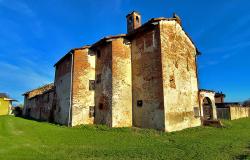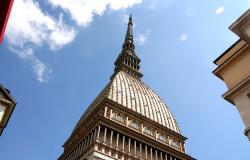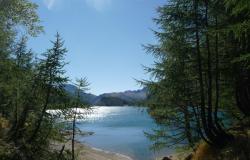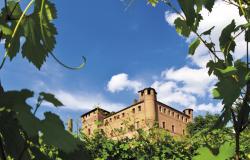The Italian countryside is a man-made wonder. Sure, it has forests and wild gorges, soaring peaks and wolf-populated woods. But its essence is lush nature tamed by millennia of human experience—golden fields of wheat and sunflowers, the silvery glint of gnarled olive groves, the fragile, pastel blossoming of peach and cherry trees. And, most of all, the pale green of vines, tidy rows following the sinuous contours of hills and valleys to frame a Romanesque church or a fortified castle in the distance.
There is no better place to soak up this human dimension of the Italian landscape than a vineyard, with its geometric elegance, the quiet buzzing of men at work and the sticky, sweet scent of sun-flooded grapes that sharply contrasts with the dark, slightly musty air of the winery. And, Italy being Italy, visiting a winery and its vineyards can also mean stumbling upon a twelve hundred year old chapel (Santa Sibiola, opposite the Argiolas estates in Sardinia), a thousand year old fortress that once belonged to Italy’s greatest mercenary leader (the Grumello castle, part of the Grumello wine estates in Lombardy) or a six hundred year old olive press hand carved into the rock (in the cellar of the Duca Carlo Guarini estate in Puglia), before ending the visit in glory with a wine tasting and a bite to eat.
Virtually each Italian winery is worth a tour because each has a story to tell—of people, toil and passion for wine. The best way to discover them is to plan a visit for the Cantine Aperte weekend at the end of May when several wine-makers throw open their doors and host special events (see www.movimentoturismovino.it for more details). But if you cannot make it to Cantine Aperte, here are three of the best wineries that are open year-round. Just remember that you need to call in advance to book a tour.
Ceretto Aziende Vitivinicole, Alba, Piedmont
 Contemporary art meets traditional winemaking at the Ceretto wineries. The Ceretto family have been making wine for three generations. And not just any wine—their estates, which span more than 140 hectares across four villages of the Piedmont’s Langhe, produce some of the region’s very best, including the young, easy Nebbiolo d’Alba, rich, slightly spicy Barbaresco and deep, earthy, complex Barolo.
Contemporary art meets traditional winemaking at the Ceretto wineries. The Ceretto family have been making wine for three generations. And not just any wine—their estates, which span more than 140 hectares across four villages of the Piedmont’s Langhe, produce some of the region’s very best, including the young, easy Nebbiolo d’Alba, rich, slightly spicy Barbaresco and deep, earthy, complex Barolo.
All their vineyards are picture perfect, climbing neatly up mellow hills topped by vernacular farmhouses. But the Cerettos also have a surprising affinity for cutting edge art, architecture and design. When they extended their Bricco Rocche winery, they also commissioned Turin architect Luca and Marina Deabate to build a monument to the Barolo wine—a sheer glass cube that marks but at the same time seamlessly blends with the landscape in an ode to contemporary taste that is also a pledge to uphold a vinous tradition.
Likewise, the Cerettos called upon artists David Tremlett and Sol LeWitt to revitalise an old, unconsecrated chapel, the Cappella delle Brunate, which stood in one of their vineyards. The chapel, built in 1914 by the local farmhands, had fallen into disrepair. LeWitt and Tremlett turned it into a bold, bright triumph of greens and reds, blues and yellows that celebrates the vitality of the Piedmontese countryside.
Visitors to the Ceretto estate can take in the art alongside the wine in either of two special guided tours centred around the main winery in Monsordo, near Alba. The first, called Wine and Art, includes a visit to the Cappella delle Brunate, as well as the winery tour and a tasting. The second, called Barolo and Architecture, takes visitors to the Bricco Rocche winery and its glass Cube, as well as the Monsordo winery. This too ends with a tasting.
There also are other options available for people that don’t have an artistic bent—a Barbaresco tour to the Ceretto winery in the village of Bricco Asili; a Wine and Hazelnut option combining a visit to the Monsordo winery and to a local nougat maker; and, in season, a Wine and Truffles jaunt to look for black truffles (in summer) or white truffles (in autumn) with a professional trifolao (truffle hunter), before visiting the Monsordo winery and enjoying a guided tasting.
All visits must be booked in advance via email (visit@ceretto.com) or phone (+39 0173 282 582). For more information visit www.ceretto.com
Villa Vignamaggio, Greve in Chianti, Tuscany
 The spirit of Mona Lisa fills the air at Vignamaggio, an extraordinary 14th century villa just outside Greve in Chianti. Sheltered by forbidding cypresses, the house—which was the setting for Kenneth Branagh’s Much Ado About Nothing in 1993—was first built by the Gherardini family in the late Middle Ages. One of their descendants, Lisa Gherardini, daughter of Vignamaggio owner Anton Maria and wife of Florentine notable Francesco del Giocondo, is the most likely model for Leonardo’s enigmatic painting.
The spirit of Mona Lisa fills the air at Vignamaggio, an extraordinary 14th century villa just outside Greve in Chianti. Sheltered by forbidding cypresses, the house—which was the setting for Kenneth Branagh’s Much Ado About Nothing in 1993—was first built by the Gherardini family in the late Middle Ages. One of their descendants, Lisa Gherardini, daughter of Vignamaggio owner Anton Maria and wife of Florentine notable Francesco del Giocondo, is the most likely model for Leonardo’s enigmatic painting.
If so, the young Mona Lisa must have certainly taken her first steps among the vineyards that surround the Chianti villa. Because, whether or not the Gherardini girl was the famous Mona, there is no doubt that Vignamaggio was making wine at the time. A scroll dating from 1404—about a hundred years before Leonardo painted Mona Lisa—already speaks of wine held in barrels at the estate.
Today, the vines cover 52 hectares of the villa’s 140. Most of the land is planted with Sangiovese, the Chianti’s traditional variety, and some with Cabernet Franc. Vignamaggio produces mostly Chianti Classico, Chianti Classico Riserva and Vinsanto, with one of the Riservas aptly named Castello di Monna Lisa (Mona Lisa’s Castle).
Visitors can take a tour of the winery and visit Vignamaggio’s extensive, beautifully formal Italian gardens before tasting some of the estate’s wines. Bottles, as well as locally-produced olive oil and grappa, are available for sale in the shop.
Vignamaggio also offers top-level agriturismo-style accommodation in cottages around the estate. And for guests who’d rather bathe in wine than drink it, there is a selection of grape therapy treatments at the wellness centre. Winery visits should be booked via email (degustazioni@vignamaggio.com), phone (+39 055 854 6624 or +39 055 854 6653) or fax +39 055 854 6676). For more information, visit www.vignamaggio.com.
Planeta’s Cantina dell’Ulmo, Sambuca di Sicilia, Sicily
 Planeta is one of Sicily’s biggest wine successes. The family is one of the engines of the island’s vinous Renaissance, which took place in the last ten years—it spearheaded the newfound passion for the deeply rich, indigenous Nero D’Avola grape, the development of sober, elegant Chardonnays, and the creation of sophisticated, fruity blends of local and international varieties. But the story of Planeta starts relatively small, in a 17th century farmhouse situated by the ruins of an ancient Arab castle on the shores of Lake Arancio, near the town of Sambuca in Sicilia. It is here, in the Planet’s ancestral home, that three of the family’s youngest scions, Alessio, Francesca and Santi, launched their wine-making business in 1995. Their venture was at the same time innovative and deeply steeped in the local culture.
Planeta is one of Sicily’s biggest wine successes. The family is one of the engines of the island’s vinous Renaissance, which took place in the last ten years—it spearheaded the newfound passion for the deeply rich, indigenous Nero D’Avola grape, the development of sober, elegant Chardonnays, and the creation of sophisticated, fruity blends of local and international varieties. But the story of Planeta starts relatively small, in a 17th century farmhouse situated by the ruins of an ancient Arab castle on the shores of Lake Arancio, near the town of Sambuca in Sicilia. It is here, in the Planet’s ancestral home, that three of the family’s youngest scions, Alessio, Francesca and Santi, launched their wine-making business in 1995. Their venture was at the same time innovative and deeply steeped in the local culture.
The Cantina di Ulmo, surrounded by 95 hectares of vineyards, was their first winery, and soon they were making waves in the international wine world. Four more wineries followed, spanning the width of Sicily and the gamut of grape varieties, but Ulmo remains the prettiest one to visit. Set close to the family farmhouse, it is a lovely building in vernacular Sicilian style and warm earth colours. It is wholly devoted to the production of Planeta’s whites—the peachy, complex Alastro, the citrusy, explosive Cometa, and a sophisticated Chardonnay—making the tasting, which is usually part of the guided tour, a particularly memorable event. Bottles are also available for sale on the premises.
All visits must be booked in advance by emailing visits@planeta.it, or sending a fax to the winery at (+39) 091 6124335. For more information, visit www.planeta.it.
